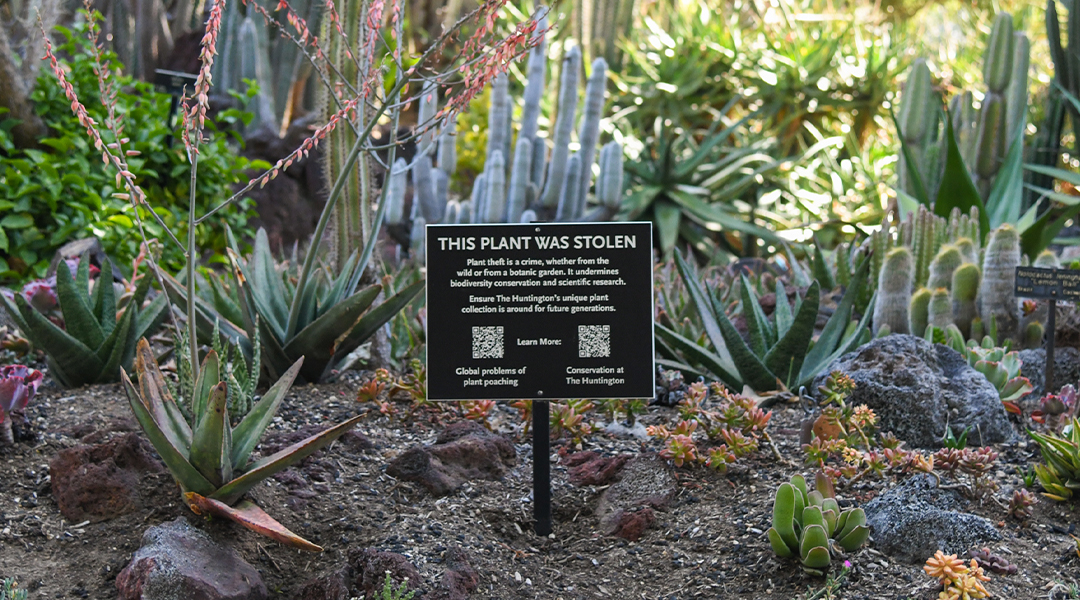
In response to a series of plant thefts from the Desert Garden in 2021, The Huntington created signage that calls attention to the crime. This approach is serving as a model for other botanical gardens as they collaborate with The Huntington to increase public awareness of the problem. Photo by Linnea Stephan. | The Huntington Library, Art Museum, and Botanical Gardens.
If you have purchased plants from The Huntington, you may have noticed that some of the labels include information other than the plant names and growing instructions. Those additional details might include the person who introduced the plant into cultivation, its geographic origin in the wild, notes about its natural habitat, and the source of The Huntington’s stock plants.
Provenance, or the ownership history of a valued item, is generally associated with works of art. But plant provenance has become increasingly important in the horticultural realm due to the escalation of plant theft from both botanical collections—including, unfortunately, The Huntington’s—and wild habitats. Like works of fine art, certain plants are highly prized and sought-after in a growing black-market economy. The situation is dire in some cases, as more and more rare and endangered species get scrubbed from their native habitats and the botanical gardens that work to protect them.
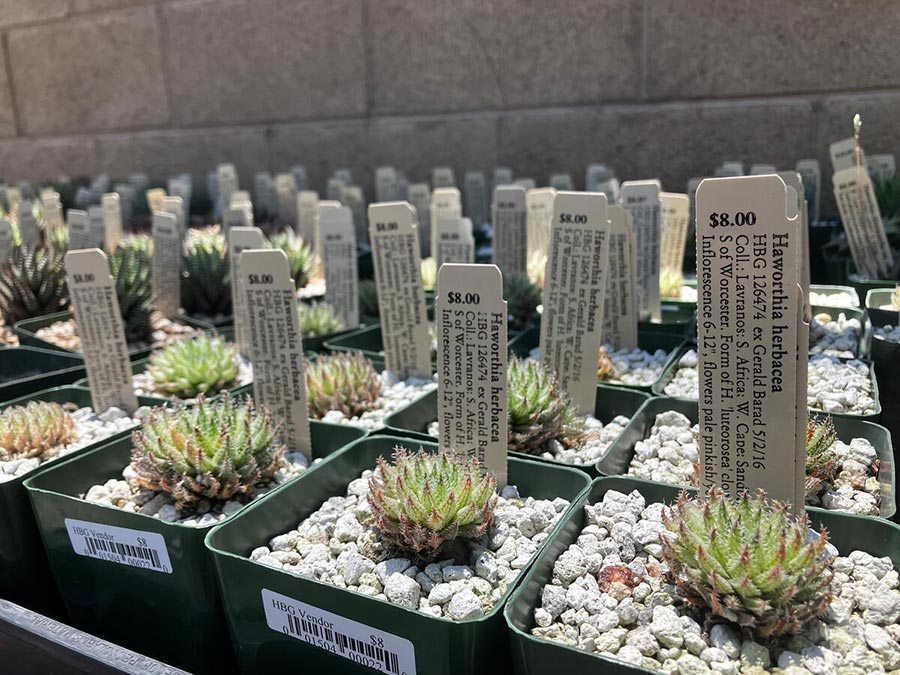
Information about the plants offered for sale at The Huntington encourages shoppers to think about the origins of their selections. Photo by Sandy Masuo. | The Huntington Library, Art Museum, and Botanical Gardens.
Over the past year, The Huntington has expanded its security efforts to help further protect the botanical collections. Additionally, it became a key partner in an international working group focused on raising awareness about plant poaching. Organized by Botanic Gardens Conservation International (BGCI), the world’s largest plant conservation network, the campaign is aimed at calling attention to the issue, promoting responsible practices in the nursery industry, and supporting enforcement agencies.
Wildlife trafficking is among the largest illegal markets in the world, and it often exploits the same trade routes as narcotics, human trafficking, and weapons, according to the United Nations Office on Drugs and Crime. Though such animal products as rhino horn, elephant ivory, and pangolin scales have been the subject of extensive outreach efforts by conservation organizations, little attention has been devoted to wild plant trafficking. The value of illegal global exports of protected plant species between 2016 and 2020 is calculated to be $9.3 billion—roughly five times greater than that of the illicit animal trade—according to the 2022 World Wildlife Trade Report, published by the Convention on International Trade in Endangered Species.
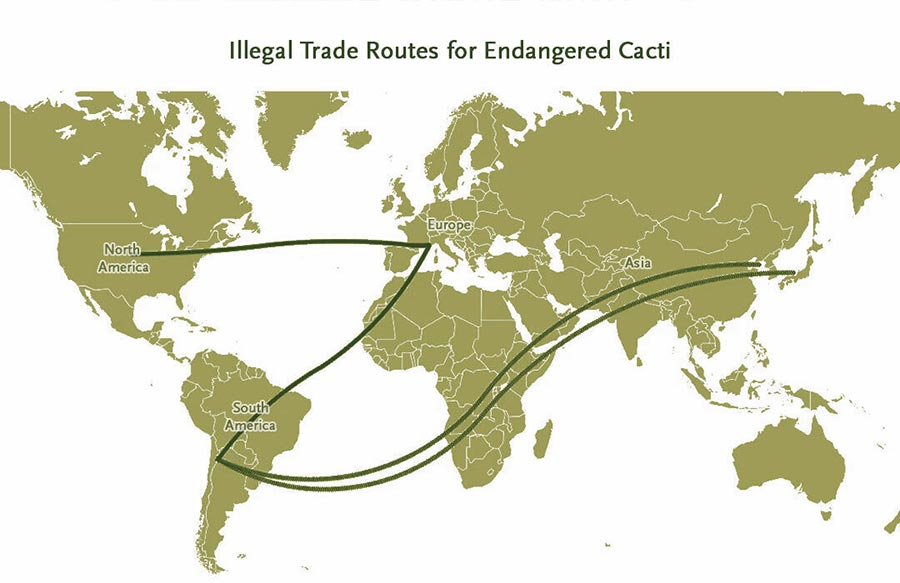
This map shows illegal trade routes for endangered cacti taken from the wild in South America. Traffickers sometimes ship plants through intermediate countries to hide the plants’ origins. | The Huntington Library, Art Museum, and Botanical Gardens.
Most of this profit is generated by the illegal logging of tropical hardwood trees—from rosewood to mahogany and beyond—for high-end furniture and luxury goods. Other major markets for illegally obtained wild plants involve traditional medicines and hobbyist plant collectors who purchase coveted specimens from unlawful vendors. The internet has fueled this wild plant trafficking, connecting distant sellers with buyers from around the world.
“In many cases, consumers are unaware that their purchases, particularly those made online, are contributing to the extinction of plant species,” said Nicole Cavender, the Telleen/Jorgensen Director of the Botanical Gardens at The Huntington. “That is why we are involved in this campaign. But plant trafficking is a complex problem that requires a multifaceted approach. Collaborating with BGCI and its worldwide network of member gardens will amplify those efforts.”

Left: Hand pollination of a cycad species that is critically endangered in the wild. Photo by Gary Roberson. Right: Infrared photography shows temperature changes that occur in a cycad cone after pollen is released. Researching the reproductive processes of endangered plants makes it possible for botanical gardens to establish populations in cultivation and artificially propagate them for sale, making illegally obtained plants less desirable. Photo by Sean Lahmeyer. | The Huntington Library, Art Museum, and Botanical Gardens.
One aspect of the BGCI campaign focuses on changing people’s assumptions that plants are a readily available commodity. A common misperception is that plants sold commercially are all grown in nurseries, just as supermarket produce comes from farms. Although most ornamental plants are indeed nursery grown, even the most common landscape shrub or decorative houseplant has wild origins. Legitimate processes for bringing plants into cultivation include steps to evaluate and limit the impact on wild populations. Poaching and trafficking circumvent these important processes. BGCI partners are developing online tools and sharing information to help consumers around the world shop for plants as responsibly as possible. In addition to connecting with gardeners and plant lovers, campaign organizers aim to provide enforcement agencies with improved plant identification aids and better information resources.
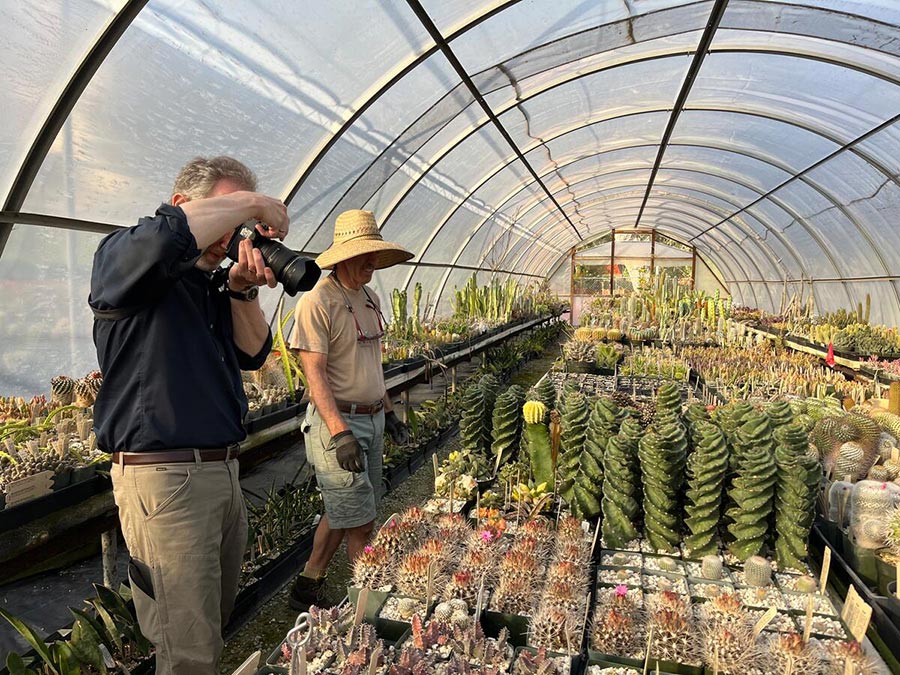
Frank Kohn of the U.S. Fish and Wildlife Service (left) and John Trager, The Huntington’s Bernie and Miyako Storch Curator of the Desert Garden and Collections, document plants at The Huntington, a designated plant rescue center. When officials confiscate illegally obtained plants, they send them on to qualified facilities, such as The Huntington, that can care for and propagate them. Photo by Sean Lahmeyer. | The Huntington Library, Art Museum, and Botanical Gardens.
“Our work with BGCI expands the conservation commitments already in place at The Huntington,” said Sean Lahmeyer, The Huntington’s associate director of botanical collections, conservation and research. “These include collaborating with scientists doing fieldwork on endangered species, networking with conservation organizations, and protecting and propagating the rare and endangered plants in our collections. So, when you shop at a Huntington plant sale, you support this important work with your purchases, and the carefully cataloged and artificially propagated selections you take home not only enrich your garden but help ensure the survival of those species’ wild counterparts.”
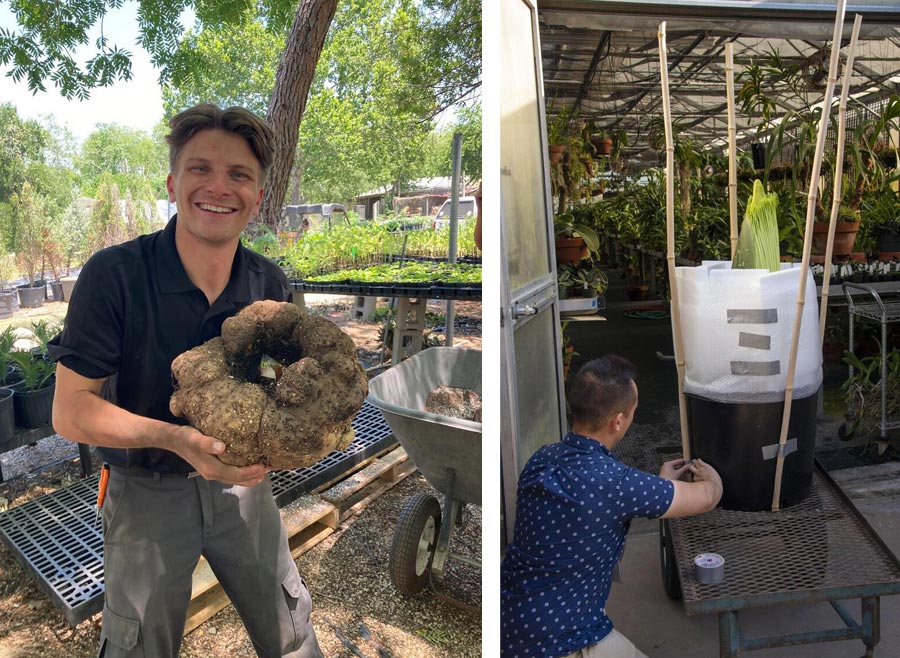
By successfully propagating and sharing plants, botanical gardens promote awareness of rare and endangered species. Left: Gregory Works, horticulture manager at the San Antonio Zoo, receives an Amorphophallus titanum corm from The Huntington for the zoo’s collection. Photo by Ariana Duffey. Courtesy of Ariana Duffey, San Antonio Zoo. Right: Brandon Tam, associate curator of orchids at The Huntington, prepares an A. titanum for a loan to the California Science Center. Photo by Deborah Miller Marr. | The Huntington Library, Art Museum, and Botanical Gardens.
Sandy Masuo is the botanical gardens content specialist at The Huntington.
